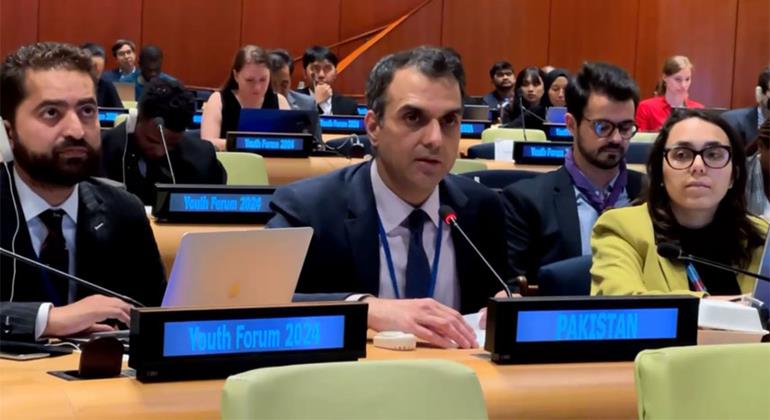January 4, 2022 (MLN): Much has been written and lamented about the dismal state of capital markets in Pakistan where only less than half the population has access to bank accounts while the number of people exposed to other asset classes – except for real estate – barely touches even 2m combined.
Mutual funds, which are generally among the most preferred way of savings and investments, are severely underdeveloped with assets under management hovering around only Rs1 trillion while the number of accounts stands at a paltry 400,000.
To dive deep into the mutual fund industry, Mettis Global sat down with Mohammad Shoaib, CFA, the CEO of Al Meezan Investment Management – one of the largest players – and talked about everything from their own performance, the market outlook considering the macroeconomic uncertainty and what’s holding back the industry.
Below are the edited transcripts.
During 1QFY22, Al Meezan saw sizable outflows in two of its largest funds. Why was that?
After touching the lows of March 2020, the market rallied on the back of stimulus and accommodative monetary policy but starting around June 2021, the cracks began appearing. There was uncertainty around the International Monetary Fund programme; inflation was heading north, hinting at tightening and then the downgrade to MSCI Frontier Markets – all of which negatively impacted the confidence in equities.
As far as the decline in the size of our equity funds is concerned, it’s not like the money has been pulled out but that market has eroded value. Another factor is that some short-term investors who had entered the market after 2020 exited once the turnaround came. For the money market, a lot of institutional liquidity which found its way into mutual funds during early Covid-19 days due to industrial activity at a standstill is now being deployed towards making infrastructure-related expenses that go along with TERF. So that money has flown out.
Furthermore, there was also some deliberate effort to reduce the size of our Rozana Amadni fund which grew too big so we launched a very similar Daily Income fund. And some of the outflows have been invested here, which has grown from zero to over Rs15 billion since launching in September. From a diversification point of view as well, this gives us more control.
What does your individual versus institutional mix look like?
Around 52% of our assets under management can be directly by individuals while another 18% – even though it’s classified as institutional – comes through retirement funds and in the true spirit represents retail investors. This is much higher than the industry average of about 35% individual investors versus 65% institutional.
Why haven’t mutual funds been able to really penetrate the mass market?
The penetration of mutual funds in Pakistan is extremely low with only 400,000 accounts out of a total population of 220 million – meaning only 0.2% of the people invest in this asset class. On the other hand, there are 40 million bank accounts and another 40m accounts with wallets. If you look at very similar markets such as India, they have 180 million people invested in mutual funds while 20% of the banked population has exposure to the industry, compared to 0.5% here.
As to what are the factors, there are two types: controllable and non-controllable. For example, low disposable income or savings rates (10-15%) are lower compared to regional countries. Another reason is the government’s need for money, which is rising a huge amount through National Savings Schemes at higher rates so liquidity goes there on priority.
In terms of controllable factors, there is a need to create awareness. For example, since mutual fund sizes are low and the cost of doing business is high, the reach of asset management companies is low compared to the banks. On average, mid to large banks have a branch network of 1,000-3,000 whereas mutual funds collectively stand at less than 100, with Al Meezan’s number at 25.
Globally, what’s done is that the distribution takes place through third parties and banks. Naturally, the question is why is this model not being used in Pakistan? The problem is that the banking spreads are so high compared to the fee charged by mutual funds, meaning banks would certainly prefer to make deposits into their own accounts and investment in government papers. The net interest margins have come down from 7% at one point in time to 4.2% now, meaning that every rupee the bank gets from the deposit and invest in government security, they make a spread of 4.2%. On the other hand, the fee of a money market mutual fund is between 20 and 50 basis points so it makes more economic sense for banks to focus on deposits than selling third party mutual funds.
Even from the ease of investing from a retail investor’s point of view, there is much more additional paperwork (compared to banks for example) and requirements when opening an account with an AMC, as required by the regulations. This is an area that needs to be looked at as it discourages potential investors. To expand this reach, the way to go forward is through digital channels and recently, some digital mutual funds have been allowed by the regulator. I personally feel that’d be a good way to attract investors as there are over 60m smartphones in Pakistan and 50% of our population is younger than 30. Certainly, they don’t have deep pockets but if we can reach those people in a seamless and paperless environment, it can help create a saving habit and increase the size of the market too.
Why have ETFs not taken off as an asset class in Pakistan?
ETFs are the in thing in the global market for the primary reason of reducing costs and its market is growing very fast. In the developed world, they are sold by third party distributors, which are broker dealers and banks. Unfortunately, neither of those channels is really active in Pakistan to promote this asset class.
Secondly, the ETFs generally grow in more efficient markets where the benefit of active investing or alpha generation is low. But in Pakistan, since the markets are not that efficient, not so liquid, there is high volatility, and the information flow is also slow so the possibility of generating alpha is much more. Because of that, you will find – even with the ETFs that have been launched – the performance of the active funds is generally higher than the passive ones. Therefore, the slow pick-up in ETFs is both a function of performance and the right distribution partners.
What’s Al Meezan’s share across the four Shariah compliant categories and the overall market?
In equity, Al Meezan has assets and is under the management of Rs50.8 billion, giving us a share of 11.68% in Shariah-compliant and 4.82% in the overall mutual fund industry as of Nov 30. For the money market, our AUM of Rs54.5 billion represents 12.6% of the Islamic and 5.2% of the total industry. The corresponding numbers of fixed income are Rs59bn at respective market shares of 13.6% and 5.6%.
Pak Qatar recently obtained an AMC license. How do you think it will affect the overall industry and your own market?
In my opinion, it’s always good to have more players come into the market as it makes the size of the pie bigger. Right now, the industry has just 400,000 accounts and is so small that the mutual funds are not competing against each other but with other sectors of the capital market, such as bank deposits or the national savings. They need to work collectively to grow the pie and that should be our focus because we can very easily take the number of accounts to 4m from 400,000 so as more players come in with new kind of products, it will be a good thing. We have had consolidation in the industry with 19 active players so there is room for more entrants.
Copyright Mettis Link News







